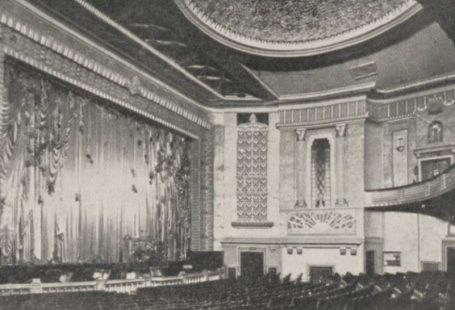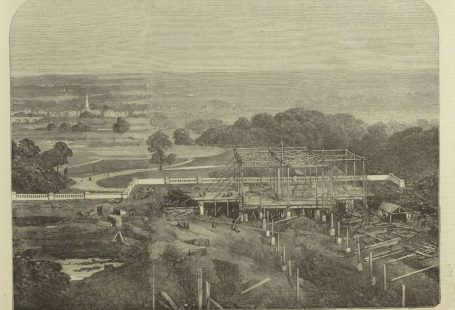Blog 10 William Randolph Hearst
In four previous visits to the USA, we had never travelled down the coast of southern California, south of San Francisco. We were determined to remedy the matter on this trip. So, we hired the car and set off from San Francisco accompanied by February winter sunlight with cold mornings and chilly, watery sunsets. We stopped overnight at Monterey, Pismo Beach, Santa Barbara, finally ending at Venice Beach, before motoring inland to Desert Hot Springs. We had beautiful weather, and the Big Sur was magnificent to behold, as the road twisted and turned for the 80 to 100 miles south. We had been told by my daughter, no less (from the young to the old these days), that a visit to Hearst Castle at San Simeon was compulsory. We were not disappointed. Built atop a mountain of some 2,000 feet, with magnificent views over the adjacent countryside, and down to the Pacific Ocean, Hearst Castle must have seemed like a fairy tale to some of its visitors in Hearst’s lifetime. The castle is a monument to the ability and resources that seemingly unlimited wealth can create.
Image © Edmund MB King
William Randolph Hearst was born on the 29 April 1863. This year marks the 150th anniversary of his birth. His life, his career in newspapers, his building and art collecting were followed by UK newspapers. Of the many UK newspaper reports of Hearst’s long life, we can get glimpses of the way he courted public notoriety over many years.
The competition to increase circulation in the 1890s between newspapers owned by Hearst (the New York Journal) and by Joseph Pulitzer, (the New York World), created the term yellow journalism. The Dundee Evening Telegraph carried an early article about the phrase, using definitions of its characteristics. “… there are some 15 or 20 of these newspapers in America. They are all well supplied with money, and their proprietors spend it without stint, with the result that they have attained a notoriety and an influence at home and abroad quite disproportionate to their intrinsic merits. Their conductors appear to possess an almost preternatural perception of the possibilities of a sensational article, and NO CONSIDERATION, PECUNIARY, LEGAL, OR MORAL, is allowed to stand in the way of their efforts to secure it.”
Dundee Evening Telegraph – Thursday 04 August 1898 page 2 col. 3.
Image © THE BRITISH LIBRARY BOARD. ALL RIGHTS RESERVED.
http://www.britishnewspaperarchive.co.uk/viewer/bl/0000453/18980804/011/0002
By October 1898, the Gloucester Citizen offered an account of how expensive, and potentially ruinious, the competition for circulation in America had been.
Gloucester Citizen – Friday 28 October 1898 page 3 col. 4.
Image © THE BRITISH LIBRARY BOARD. ALL RIGHTS RESERVED.
http://www.britishnewspaperarchive.co.uk/viewer/bl/0000325/18981028/013/0003
Hearst’s acquisitions of newspapers in the USA must have raised concerns in Great Britain that he would attempt to acquire British newspapers, to increase his influence with the British press. The Standard made a public denial of any connection with Hearst, and the Aberdeen Journal – published this in November 1904, with Hearst referred to as “…the monarch of Transatlantic yellow journalism.”
Aberdeen Journal – Wednesday 09 November 1904
Image © THE BRITISH LIBRARY BOARD. ALL RIGHTS RESERVED.
http://www.britishnewspaperarchive.co.uk/viewer/bl/0000576/19041109/077/0006
Speculation about Hearst’s business ventures continued. His Mexican estate was mentioned in a brief report of the Derby Daily Telegraph, 30th November 1906. He prospected for oil on his Mexican land, with some early success.
Derby Daily Telegraph – Friday 30 November 1906 page 4 col. 3.
Image © Northcliffe Media Limited. Image created courtesy of THE BRITISH LIBRARY BOARD.
http://www.britishnewspaperarchive.co.uk/viewer/bl/0000327/19061130/059/0004
However, Hearst could not prevent the expropriation of his property in Mexico, which took place in the early 1940s.
Dundee Evening Telegraph – Friday 09 January 1942 page 8 col. 5.
Image © D.C.Thomson & Co. Ltd. Image created courtesy of THE BRITISH LIBRARY BOARD.
http://www.britishnewspaperarchive.co.uk/viewer/bl/0000563/19420109/094/0008
With regard to Hearst’s role in the Spanish-American war of 1898, an Editorial in the Manchester Courier and Lancashire General Advertiser of November 1907 deplored his writing to the British press, saying disparaging things about Great Britain, instead of answering in the American press the charge that he had provoked the war. According to this report, Hearst was attempting to create anti-British feelings amongst voters in America, to secure more advantage for his electoral prospects in New York.
Manchester Courier and Lancashire General Advertiser – Monday 04 November 1907 page 6 col. 3.
Image © Northcliffe Media Limited. Image created courtesy of THE BRITISH LIBRARY BOARD.
http://www.britishnewspaperarchive.co.uk/viewer/bl/0000206/19071104/060/0006
Hearst continued to acquire property, securing St. Donat’s Castle in Wales in 1925. The article in the Western Daily Press emphasised that the purchase transaction took only three hours to conclude.
Western Daily Press – Wednesday 16 September 1925 page 12 col. 2
Image © Northcliffe Media Limited. Image created courtesy of THE BRITISH LIBRARY BOARD.
http://www.britishnewspaperarchive.co.uk/viewer/bl/0000264/19250916/104/0012
As befitted a man of great wealth, Hearst could take lightly his expulsion from France in 1930. The matter was due to an incident in 1928, “…when Mr. Horan, an employe [sic] of Mr. Hearst, telegraphed details of Anglo-French naval negotiations, which were published in Mr. Hearst’s American newspapers.” Hearst hints that France ought to use some of the German indemnity from World War I, to pay off France’s debts to America, adding, as only a very rich man could: “If being a competent journalist and a loyal American make a man persona no grata in France, I think I can endure the situation without loss of sleep”.
Western Morning News – Wednesday 03 September 1930 page 7 col. 4.
Image © Northcliffe Media Limited. Image created courtesy of THE BRITISH LIBRARY BOARD.
http://www.britishnewspaperarchive.co.uk/viewer/bl/0000329/19300903/058/0007
Hearst’s views expressed in his paper continued to be widely quoted. Implicitly supporting European imperialism in Africa in 1935, he stated: “ ‘I do not think the nations of the Old World can be blamed for expanding…they are only carrying the light of civilisation into the dark places of the earth. …Why should not the vigorous nations of Europe proclaim the waste places of Africa and dedicate them to civilised development?’” Today, this seems quite outdated, in the era of post-colonialism.
Western Daily Press – Monday 14 October 1935 page 12 col. 3.
Image © Northcliffe Media Limited. Image created courtesy of THE BRITISH LIBRARY BOARD.
http://www.britishnewspaperarchive.co.uk/viewer/bl/0000513/19351014/129/0012
Hearst’s many years of collecting works of art especially from Europe, became fascinating to many. That Hearst had acquired some 240,000 acres of land in California was itself noteworthy. That he created an enormous house 2,000 feet atop a mountain, spending a fortune on its construction and its furnishing, became as notorious as his earlier years as a newspaper owner. In a long article written for the Western Morning News, Geoffrey Harmsworth recorded some of the figures: 400 square miles of the San Simeon ranch; a cost of £7 million pounds spent on the building up to 1939; the cost of furnishing it with art treasures – £3 million pounds; the use of private aeroplanes for the flight from Los Angeles to San Simeon. All this simply increased the fairy tale aspect of his work, for millions who could never hope to own such wealth. The sense of beauty, of fine surroundings in all aspects of the house and its grounds, persist to this day, offering to hundreds of thousands of visitors the embodiment of the ‘American dream’, that unlimited wealth can offer. Harmsworth offered his readers the term: ‘the Enchanted Hill’, for Hearst’s castle – entirely correctly.
Western Morning News – Saturday 01 April 1939 page 13
Image © Northcliffe Media Limited. Image created courtesy of THE BRITISH LIBRARY BOARD.
http://www.britishnewspaperarchive.co.uk/viewer/bl/0000329/19390401/098/0013
Image © Edmund MB King
With all round views from his mountain top home, with the word ‘castle’ having its own connotations, Hearst created a special place to lead his life, and we can all wonder at the compulsion that drove him to do this.
Image © Edmund MB King
Ed King
April 2013




